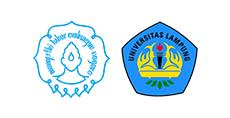Effective Use of Blended Learning Flipped Classroom Type Reviewed from Student Learning Outcomes in Digital Simulation Subjects at SMK Negeri 3 Surakarta
Abstract
Full Text:
PDFReferences
Abid Azhar, K., & Iqbal, N. (2018). Effectiveness of Google Classroom: Teachers’ Perceptions. Prizren Social Science Journal, 2(2), 52–66.
Arikunto, S. (2006). Penelitian Tindakan Kelas. Jakarta: Bumi Aksara.
Ario, M., & Asra, A. (2018). Pengaruh Pembelajaran Flipped Classroom terhadap Hasil Belajar Kalkulus Integral Mahasiswa Pendidikan Matematika. ANARGYA: Jurnal Ilmiah Pendidikan Matematika, 1(2), 82–88. https://doi.org/10.24176/anargya.v1i2.2477
Djamarah, S. B., & Zain, A. (2013). Strategi Belajar Mengajar. Jakarta: Rineka Cipta.
Guritno, A. (2016). Evaluasi Implementasi Pembelajaran Berbasis Kompetensi dan Produksi pada Bidang Keahlian Teknik Bangunan di SMK Negeri 6 Bandung. 1–6.
Iftakhar, S. (2016). Google classroom: what works and how? 3, 12–18.
Nouri, J. (2016). The flipped classroom: for active, effective and increased learning – especially for low achievers. International Journal of Educational Technology in Higher Education, 13(1). https://doi.org/10.1186/s41239-016-0032-z
Permendikbud RI. (2005). Peraturan Menteri Pendidikan Nasional RI No. 19 tahun 2005 tentang Standar Nasional Pendidikan. Jakarta.
Pribadi, B. A. (2011). Model ASSURE Untuk Mendesain Pembelajaran Sukses. Jakarta: PT. Dian Rakyat.
Staker, H., & Horn, M. B. (2012). Classifying K – 12 Blended Learning. INNOSIGHT Institute, (May), 1–17.
Sugiyono. (2010). Metode penelitian pendidikan: Pendekatan kuantitatif, kualitatif, dan R&D. Bandung: Alfabeta.
Refbacks
- There are currently no refbacks.






